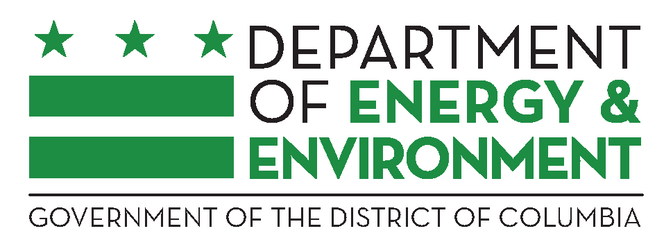Trey Sherard Aug 1 2024 at 12:23AM on page 49
Warning message
The installed version of the browser you are using is outdated and no longer supported by Konveio. Please upgrade your browser to the latest release.Anacostia River Corridor Restoration Plan [General Public Feedback]
The final public comment window for the Anacostia River Corridor Restoration Plan closed on July 31, 2024. DOEE intends to release the final plan in the fall of 2024. To learn more, please visit: restoretheanacostiariver.com
Anacostia River Corridor Restoration Plan Background:
The Anacostia River Corridor Restoration Plan (ARCRP) is a restoration planning project for the Anacostia River corridor being led by the District of Columbia's Department of Energy & Environment (DOEE). The plan seeks to identify and prioritize specific strategies for restoring the fish and wildlife habitat, improving water quality, adapting to climate change, and increasing equitable public access to the river corridor. The scope of this project is limited to the Anacostia River's 500 year floodplain within the District of Columbia. To learn more please visit: restoretheanacostiariver.com
After over two years of meaningful engagement with community members and close coordination with stakeholders, DOEE is very excited to share this restoration plan for public review.
Questions or concerns? Feel free to contact the Office of District Waterways Management at ODWM@dc.gov
Anacostia River Seawall Rapid Assessment:
In addition to the ARCRP, we are also conducting an assessment of the historic seawall that lines 12.5-miles of the District's portion of the mainstem of Anacostia River to better understand the seawall's structural, ecological, and historical integrity.
Want to learn more? Click here to read the Seawall Rapid Assessment Report.
Commenting is closed for this document.
Trey Sherard Aug 1 2024 at 12:19AM on page 49
Trey Sherard Aug 1 2024 at 12:17AM on page 49
Trey Sherard Aug 1 2024 at 12:13AM on page 48
Trey Sherard Aug 1 2024 at 12:12AM on page 48
Trey Sherard Aug 1 2024 at 12:12AM on page 48
Trey Sherard Aug 1 2024 at 12:10AM on page 48
Trey Sherard Aug 1 2024 at 12:07AM on page 48
Trey Sherard Aug 1 2024 at 12:05AM on page 48
Trey Sherard Aug 1 2024 at 12:01AM on page 48
Trey Sherard Jul 31 2024 at 11:57PM on page 47
Trey Sherard Jul 31 2024 at 11:54PM on page 47
Trey Sherard Jul 31 2024 at 11:53PM on page 47
Trey Sherard Jul 31 2024 at 11:50PM on page 47
Trey Sherard Jul 31 2024 at 11:49PM on page 46
Trey Sherard Jul 31 2024 at 11:47PM on page 46
Trey Sherard Jul 31 2024 at 11:45PM on page 46
Stella Tarnay, Capital Nature Jul 31 2024 at 10:55PM on page 62
Stella Tarnay, Capital Nature Jul 31 2024 at 10:53PM on page 62
Stella Tarnay, Capital Nature Jul 31 2024 at 10:48PM on page 62
Stella Tarnay, Capital Nature Jul 31 2024 at 10:46PM on page 62
Stella Tarnay, Capital Nature Jul 31 2024 at 10:44PM on page 58
Stella Tarnay, Capital Nature Jul 31 2024 at 10:43PM on page 58
Stella Tarnay, Capital Nature Jul 31 2024 at 10:43PM on page 58
Stella Tarnay, Capital Nature Jul 31 2024 at 10:42PM on page 57
Stella Tarnay, Capital Nature Jul 31 2024 at 10:39PM on page 57
Stella Tarnay, Capital Nature Jul 31 2024 at 10:38PM on page 57
Stella Tarnay, Capital Nature Jul 31 2024 at 10:37PM on page 57
Stella Tarnay, Capital Nature Jul 31 2024 at 10:37PM on page 57
Stella Tarnay, Capital Nature Jul 31 2024 at 10:36PM on page 55
Stella Tarnay, Capital Nature Jul 31 2024 at 10:35PM on page 55
Stella Tarnay, Capital Nature Jul 31 2024 at 10:35PM on page 55
Stella Tarnay, Capital Nature Jul 31 2024 at 10:33PM on page 55
Stella Tarnay, Capital Nature Jul 31 2024 at 10:32PM on page 54
Stella Tarnay, Capital Nature Jul 31 2024 at 10:21PM on page 51
Stella Tarnay, Capital Nature Jul 31 2024 at 10:20PM on page 50
Stella Tarnay, Capital Nature Jul 31 2024 at 10:17PM on page 46
Stella Tarnay, Capital Nature Jul 31 2024 at 10:13PM on page 49
Stella Tarnay, Capital Nature Jul 31 2024 at 10:09PM on page 43
mdombros Jul 31 2024 at 10:07PM on page 49
Stella Tarnay, Capital Nature Jul 31 2024 at 10:05PM on page 42
Stella Tarnay, Capital Nature Jul 31 2024 at 10:01PM on page 41
Stella Tarnay, Capital Nature Jul 31 2024 at 9:59PM on page 58
Stella Tarnay, Capital Nature Jul 31 2024 at 9:58PM on page 56
Stella Tarnay, Capital Nature Jul 31 2024 at 9:52PM on page 39
mdombros Jul 31 2024 at 9:49PM on page 37
Stella Tarnay, Capital Nature Jul 31 2024 at 9:48PM on page 38
mdombros Jul 31 2024 at 9:47PM on page 35
mdombros Jul 31 2024 at 9:46PM on page 35

Comments
Close